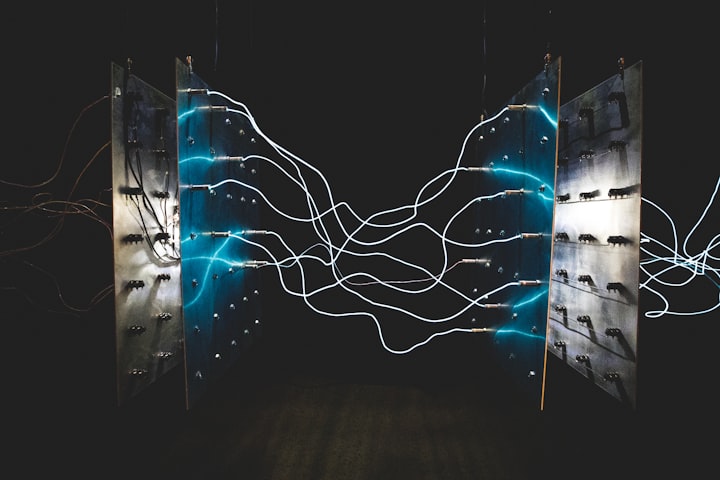The Big Misconception About Electricity
something you need to know about energy

Imagine a giant circuit with a battery, a switch, a light bulb, and two wires, each 300,000 kilometers long—the distance light travels in one second. These wires would reach halfway to the moon and then come back to connect to the light bulb just one meter away. Now, the question arises: after closing this switch, how long would it take for the bulb to light up? Choose from options like half a second, one second, two seconds, 1/c seconds, or none of the above.
Certain assumptions must be made about this circuit, such as the wires having no resistance for it to work, and the light bulb turning on immediately when the current passes through it. Commit to an answer and share it in the comments before the actual answer is revealed later in the video.
This question has relevance to how electrical energy gets from a power plant to your home. Unlike a battery, electricity in the grid comes in the form of alternating current (AC), where electrons in the power lines wiggle back and forth without actually going anywhere. So, if the charges don't physically travel from the power plant to your home, how does electrical energy reach you?
The common analogy of power lines being like flexible plastic tubing with electrons inside as a chain is incorrect. Instead, according to James Clerk Maxwell's breakthrough in the 1860s and 70s, light is made up of oscillating electric and magnetic fields. John Henry Poynting, one of Maxwell's former students, expanded on this understanding in 1883, proposing the concept of the Poynting vector to describe energy flux—the amount of electromagnetic energy passing through an area per second.
Poynting's vector, represented as S, depends on the cross product of electric (E) and magnetic (B) fields. The video emphasizes that it is these fields, and not the electrons, that carry the energy. The example of a simple circuit with a battery and a light bulb is used to illustrate this concept. The electric field from the battery extends through the circuit at the speed of light, creating a combination of electric and magnetic fields around the wires.
The direction of energy flow is determined by the Poynting vector using the right-hand rule. The conclusion is that energy is transmitted by the electric and magnetic fields, and not by the electrons themselves. The video addresses misconceptions about pumping electrons and emphasizes the importance of understanding that the energy is flowing through the space around the conductor.
The discussion delves into historical challenges faced when laying undersea telegraph cables and how scientists like Heaviside and Fitzgerald argued for the role of fields around the wires in carrying energy, which proved to be correct.
Returning to the initial question about the giant circuit and the light bulb, the correct answer is revealed to be approximately 1/c seconds. The video encourages viewers to think about this explanation every time they flick on a light switch, ending with a sponsorship message from Caséta by Lutron, providing premium smart lighting control solutions.
Understanding how electrical energy truly flows, with electromagnetic waves around power lines delivering power, adds a new perspective to everyday activities. Caséta by Lutron offers smart lighting control options that enhance the overall experience. Installation is simplified, and the product is compatible with various smart home brands, allowing users to control lights using their phones or voice-activated devices.
About the Creator
NICHOLAS MURIUNGI
I have nothings to offer to the world but writing story





Comments
There are no comments for this story
Be the first to respond and start the conversation.